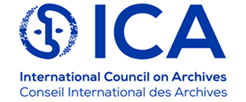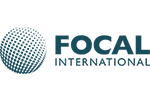FIAT/IFTA World Conference 2016
Rethink the future of AV
The 2016 FIAT/IFTA World Conference will take place in Warsaw, hosted by the National Audiovisual Institute of Poland; NInA, from October 12 to October 15.
Today, audiovisual content is ubiquitous, anywhere and increasing all the time. It is produced and exchanged constantly by ever more people. Communication and interactions are ever more in a multi-media form enabled by new and flourishing digital technologies. This poses huge questions and challenges to all organisations managing audiovisual content for future access and re-use. As media archives, how do we continue to capture the present, preserve the past and make it all available for the future with an increasing amount of contents surrounding us?
As every year, the conference will provide a unique occasion for archives to discuss & learn about their challenges and understand the innovations in uses and technology. Different aspects of the archive’s life, use and potential value will be presented permitting participants to grasp what has been done and what we will be able to do in the future. Special emphasis will be put in exchanges and discussions with experts or through round-tables for a deeper understanding of ideas.
The conference will have different types of sessions presenting:
Keynote speakers;
Plenary sessions;
Workshops;
Case study sessions;
Round-tables.
Call for presentations:
Presentations should be based on user experiences or new perspectives; the main objective is to share knowledge and results with FIAT/IFTA members in order to understand the lessons learned and new challenges or solutions arising. Each session will consist of four 20 minutes presentations plus time for discussion and questions.
The following list of topics reflects current interests and evolutions; other suggestions for subjects which are not mentioned in the call are welcome, please send them to us so we can get a better understanding of the needs of our members.
If you would like to present during the 2016 World Conference please send us an abstract of the presentation (15 to 20 lines) and a short bio (5 to 10 lines). The selection of presentations will be made in June by the program organization team. The presenters will receive an email after this selection.
The deadline for presenting propositions is June 12th 2016.
Contributions should be sent to: office@fiatifta.org
Call for presentations in the following domains:
Media Management – Evolution or Revolution? Case studies, User experiences, changing workflows and new roles in a digital MAM environment in broadcast and national archives.
The challenge of multimedia issues in Archives: new multi-platform technologies and tools, 360° publishing, smartphones, Virtual Reality, changing workflows and new roles in production and archiving.
Case Studies of implementations of 2nd and 3rd-generation MAM-systems in broadcast and national archives;
Metadata – New methods of metadata creation, harvesting production data for archives, automated metadata enrichment, quality control, structured to non- structured metadata, web and social media metadata, user generated and consumer generated content and data;
Social media used for sentiment analysis; impact of sentiment analysis or opinion mining in understanding the attitude of users regarding content;
Big-data in the Archive: uses of big-data are quickly developing in all domains of activity, bringing new perspectives to users and archivists. Case studies, ideas, perspectives, dangers.
Big-data and business intelligence – Case studies of data capture and impact on the broadcast production and archives. Use and value – statistical analysis for what purposes? –; improving performance, programme editorial enhancements, archive enrichments;
Where are we in the world of analytics? Examples of big-data based analytics in archival environments
From user generated metadata to consumer-generated metadata:
business intelligence and measuring use as a way of metadata creation;
broadcaster’s archives feeding the research department with statistics;
Cross initiatives bringing together humanities and technical tools for content analysis; humanities and big-data;
Archiving and the long-term perspective: with an increasing mass of incoming contents, the archival process changes in dimension and nature; examples of new solutions and context surrounding the Archive.
The Forever Archive, how archives approach the very long-term perspective for their activity;
The Everywhere Archive, access on all platforms, formats and locations; a new perspective and necessity for content holders;
Policy, technology and reshaping audiovisual national audiovisual heritage landscapes; policy is always behind technology; can this gap be bridged, and how?;
Archiving Social Media. Case studies and impact on the broadcast archives, how is it done, who is responsible, what are the tools?;
New training experiences for archivists;
The economy of Archives:
How to keep the archive running, experiences and perspectives;
Who funds archives (inside and outside the broadcast world);
Preservation and digitization: these issues are the basic background activity for any archive. We are getting closer to the moment where analogue material will have totally disappeared. Many actions are related to digitization and an increasing number of content holders concerned.
Audiovisual collections in non-audiovisual archives: urgent digitization needed; how can the community help?;
The loss of our analogue contents towards 2025 or “analogue black hole”; how can we be innovative when trying to find solutions in order to prevent our memory to fade- out?;
What to do with analogue carriers after digitization, examples and proposals?;
Cloud-services for AV-archives: QC, cataloguing, storage, state of art, how reliable can they be in relation to archival missions?;
Preserving unusual contents: mobiles, tweets and multimedia flows?;
Archives and their users: user-oriented approach, creative and educational content re-use, curation, transmedia, storytelling, case studies, are all recent concepts concerning our activities; examples of new uses of archival material related to users.
Engaging with the past – innovative and interactive ways of archival presentations, leading to more profound user-experience
“The Cultural Archive” – examples of the best online culture archives;
“The Creative Archive” – examples and uses of Web documentaries based on archival material and other new forms of archive valorisation;
“The impact of community archives” – Creating and engaging with collections bottom-up: video’s, documents, material objects, oral history and other audio-visual material;
Educational uses and re-uses of archives
Transmedia storytelling – digital storytelling and multimedia narrative using archival footage
Video accessibility – community-driven subtitling and translations
FIAT/IFTA World Conference 2016
Rethink the future of AV
The 2016 FIAT/IFTA World Conference will take place in Warsaw, hosted by the National Audiovisual Institute of Poland; NInA, from October 12 to October 15.
Today, audiovisual content is ubiquitous, anywhere and increasing all the time. It is produced and exchanged constantly by ever more people. Communication and interactions are ever more in a multi-media form enabled by new and flourishing digital technologies. This poses huge questions and challenges to all organisations managing audiovisual content for future access and re-use. As media archives, how do we continue to capture the present, preserve the past and make it all available for the future with an increasing amount of contents surrounding us?
As every year, the conference will provide a unique occasion for archives to discuss & learn about their challenges and understand the innovations in uses and technology. Different aspects of the archive’s life, use and potential value will be presented permitting participants to grasp what has been done and what we will be able to do in the future. Special emphasis will be put in exchanges and discussions with experts or through round-tables for a deeper understanding of ideas.
The conference will have different types of sessions presenting:
Keynote speakers;
Plenary sessions;
Workshops;
Case study sessions;
Round-tables.
Call for presentations:
Presentations should be based on user experiences or new perspectives; the main objective is to share knowledge and results with FIAT/IFTA members in order to understand the lessons learned and new challenges or solutions arising. Each session will consist of four 20 minutes presentations plus time for discussion and questions.
The following list of topics reflects current interests and evolutions; other suggestions for subjects which are not mentioned in the call are welcome, please send them to us so we can get a better understanding of the needs of our members.
If you would like to present during the 2016 World Conference please send us an abstract of the presentation (15 to 20 lines) and a short bio (5 to 10 lines). The selection of presentations will be made in June by the program organization team. The presenters will receive an email after this selection.
The deadline for presenting propositions is June 12th 2016.
Contributions should be sent to: office@fiatifta.org
Call for presentations in the following domains:
Media Management – Evolution or Revolution? Case studies, User experiences, changing workflows and new roles in a digital MAM environment in broadcast and national archives.
The challenge of multimedia issues in Archives: new multi-platform technologies and tools, 360° publishing, smartphones, Virtual Reality, changing workflows and new roles in production and archiving.
Case Studies of implementations of 2nd and 3rd-generation MAM-systems in broadcast and national archives;
Metadata – New methods of metadata creation, harvesting production data for archives, automated metadata enrichment, quality control, structured to non- structured metadata, web and social media metadata, user generated and consumer generated content and data;
Social media used for sentiment analysis; impact of sentiment analysis or opinion mining in understanding the attitude of users regarding content;
Big-data in the Archive: uses of big-data are quickly developing in all domains of activity, bringing new perspectives to users and archivists. Case studies, ideas, perspectives, dangers.
Big-data and business intelligence – Case studies of data capture and impact on the broadcast production and archives. Use and value – statistical analysis for what purposes? –; improving performance, programme editorial enhancements, archive enrichments;
Where are we in the world of analytics? Examples of big-data based analytics in archival environments
From user generated metadata to consumer-generated metadata:
business intelligence and measuring use as a way of metadata creation;
broadcaster’s archives feeding the research department with statistics;
Cross initiatives bringing together humanities and technical tools for content analysis; humanities and big-data;
Archiving and the long-term perspective: with an increasing mass of incoming contents, the archival process changes in dimension and nature; examples of new solutions and context surrounding the Archive.
The Forever Archive, how archives approach the very long-term perspective for their activity;
The Everywhere Archive, access on all platforms, formats and locations; a new perspective and necessity for content holders;
Policy, technology and reshaping audiovisual national audiovisual heritage landscapes; policy is always behind technology; can this gap be bridged, and how?;
Archiving Social Media. Case studies and impact on the broadcast archives, how is it done, who is responsible, what are the tools?;
New training experiences for archivists;
The economy of Archives:
How to keep the archive running, experiences and perspectives;
Who funds archives (inside and outside the broadcast world);
Preservation and digitization: these issues are the basic background activity for any archive. We are getting closer to the moment where analogue material will have totally disappeared. Many actions are related to digitization and an increasing number of content holders concerned.
Audiovisual collections in non-audiovisual archives: urgent digitization needed; how can the community help?;
The loss of our analogue contents towards 2025 or “analogue black hole”; how can we be innovative when trying to find solutions in order to prevent our memory to fade- out?;
What to do with analogue carriers after digitization, examples and proposals?;
Cloud-services for AV-archives: QC, cataloguing, storage, state of art, how reliable can they be in relation to archival missions?;
Preserving unusual contents: mobiles, tweets and multimedia flows?;
Archives and their users: user-oriented approach, creative and educational content re-use, curation, transmedia, storytelling, case studies, are all recent concepts concerning our activities; examples of new uses of archival material related to users.
Engaging with the past – innovative and interactive ways of archival presentations, leading to more profound user-experience
“The Cultural Archive” – examples of the best online culture archives;
“The Creative Archive” – examples and uses of Web documentaries based on archival material and other new forms of archive valorisation;
“The impact of community archives” – Creating and engaging with collections bottom-up: video’s, documents, material objects, oral history and other audio-visual material;
Educational uses and re-uses of archives
Transmedia storytelling – digital storytelling and multimedia narrative using archival footage
Video accessibility – community-driven subtitling and translations












